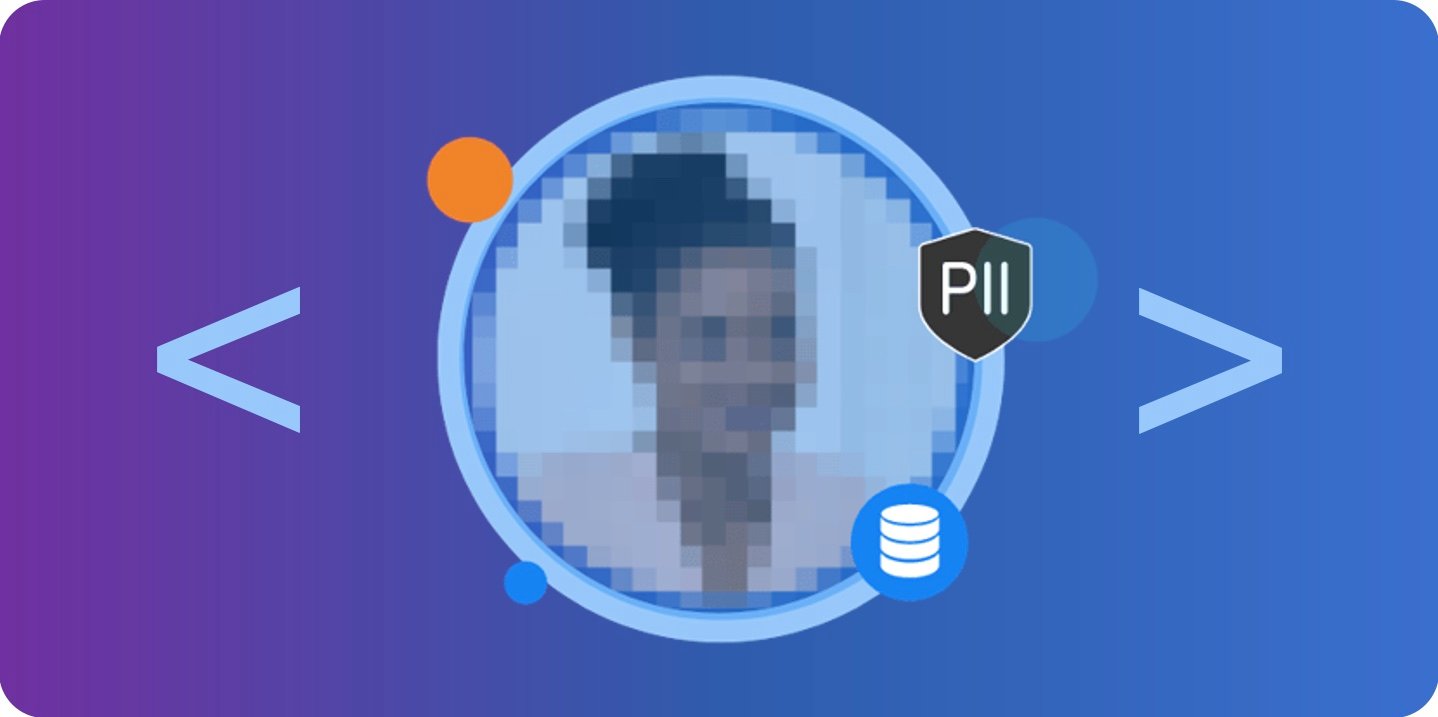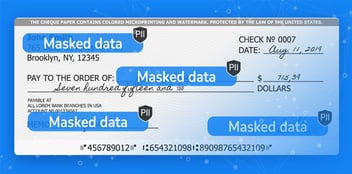What are the most essential features to look for in data masking software? Read about the use cases, capabilities, vendors, and approaches to consider.
Data Masking Software is a Must-Have for Modern Enterprises
It’s not often DevOps, DevSecOps, and data governance teams are all on the same page. But when it comes to data masking software, there’s a clear consensus: it’s essential.
Data masking is defined as the process of anonymizing sensitive data by replacing it with non-sensitive values. It supports a wide variety of use cases to promote innovation and speed while preventing bottlenecks. As the need for rapid and secure data integration rises, data masking software has become invaluable to enterprises.
However, not all data masking software offers the features and capabilities you need to discover and protect PII without slowing down software application development and other workloads. Keep reading for useful information on data masking software, including use cases, key capabilities, and top vendors.
What is Data Masking?
Data masking is a form of data obfuscation and de-identification. It protects sensitive data by replacing real PII (Personally Identifiable Information) with scrambled, yet statistically equivalent, data.
Masking data is considered to be one of the most secure methods of data anonymization because the original data cannot be identified or reverse engineered. It’s favored by production and analytics teams, because masked data remains functional for use cases such as customer 360, test data management, data migration, and legacy application modernization.
Data masking tools are used to protect data associated with:
-
PII: Personally Identifiable Information, to comply with data privacy regulations,
such as GDPR, CCPA, HIPAA, SOX, APPI, DCIA, PDP, and more. -
PCI-DSS: Payment Card Industry Data Security Standard (payment card information)
-
PHI: Protected Health Information, such as patient names, healthcare service dates, etc.
-
IP: Intellectual Property, including copyrights, patents, trademarks, and trade secrets.
Data Masking Software Use Cases
DevOps, testing, security, compliance, and other business domain teams rely on data masking software to ensure that their data remains secure, compliant, and functional. Here are 5 of the most common data masking use cases:
-
Test data management
Effective software and application testing demands realistic, complete, clean, and reliable data. Instead of using real production data, which increases risk of noncompliance and data breaches, masked data provides a functional and secure alternative.
-
Data governance
Data masking is a common method of controlling data access. Static data masking anonymizes a single dataset, while dynamic data masking enables more nuanced restrictions. For example, you can use dynamic data masking to set permissions based on role or environment, so sensitive data isn’t exposed to those without access rights.
-
Data security
Despite rising internal, external, including third-party, data security threats, data masking software ensures sensitive data remains protected in the event of a breach. Although masked data looks real, it can’t be used to identify a real person or event, or make a fraudulent transaction. To put it simply, masked data has no value to a hacker, nor does it put real sensitive data at risk.
-
Customer 360
A 360-degree view of the customer (also called a single customer view) provides a complete, unified picture of the customer – one that integrates the interaction, transaction, and master data for each customer. Customer 360 tools provide immense value to enterprises, enabling them to make better business decisions, improve the customer journey, enhance personalization, boost engagement, and prevent churn. Data masking ensures customer data remains secure and compliant, while supporting on-demand access for business users.
-
Compliance
As data privacy regulation expands, the consequences for failing to comply with laws such as PCI/DSS, HIPAA, GDPR, CPRA/CCPA, and LGPD can cost companies millions of dollars (4% of their annual turnover or €20 million). Additional costs, such as litigation and brand damage, can compound these penalties for years.
Top 8 Data Masking Software Capabilities
If you’re in the market for data masking software, make sure the solution you select offers the following features and capabilities. Otherwise, you may find yourself needing to invest in yet another platform to bridge the gaps.
-
Integration with any database or data source
With a growing need for data migration tools, and legacy application modernization tools, the number and type of vendor technologies is rapidly increasing. Make sure you choose a vendor that will be able to support ALL of your existing and future data sources, whenever masking is required. -
PII discovery
Data masking software should have the ability to automatically analyze any structured or unstructured data and metadata, catalog and map schema relationships, and discover and identify PII.
-
Multiple data masking techniques
Different data use cases require different data masking techniques. What serves a software tester may not be useful for a data scientist working on an advanced AI/ML project. The data masking software you select should support a variety of data masking techniques, such as anonymization, pseudonymization (e.g., tokenization), encrypted lookup substitution, redaction, shuffling, data aging, nulling out, and more.
-
Unstructured data masking
Sensitive data usually exists within unstructured data (also known as qualitative data), such as images, PDFs, drivers licenses, XML files, chats, and more. Your data masking software should support both structured and unstructured data masking, to avoid any risk of non-compliance or data breaches.
-
Dynamic data masking
Dynamic data masking allows data teams to control who can access sensitive data by specifying who is authorized to view it, and to what extent. You should even be able to define different types of masking for different audiences. Data masking software that enables a dynamic approach minimizes the risk of internal security threats and noncompliance while ensuring developers and testers can access the data they need.
-
Relational Consistency
It’s vital that the data masking software you select represents masked data consistently and persistently throughout your business systems. This requires masking every type of data originating from a certain business system with the same algorithm (“referential integrity"). Robust data masking software will have the ability to automatically apply the same types of data masking techniques and algorithms to the PII in various data sources.
-
Reporting and auditing functionality
Compliance with data privacy regulations is a top priority for enterprises today. Therefore, you’ll want a data masking software that has reporting and auditing capabilities built in, suitable for both external and internal audits.
-
Synthetic data generation
If the data masking software you select can be augmented with synthetic data generation functionality, your data testing and development teams will thank you. Synthetic data generation refers to artificially produced datasets that mimic production data. Synthetic test data is useful because it can speed up test data provisioning, which is often a bottleneck to DevOps and software testing teams. Advanced data masking software can detect when there’s not enough production data to work with. In such cases, synthetic data generation tools can be used to create synthetic data, which presents even less risk of a breach or non-compliance.
Leading Data Masking Vendors
The most highly rated data masking solutions available today include:
- K2View
- Broadcom
- IBM
- Informatica
- Datprof
For a deep dive into each solution, read about the top 5 data masking vendors for 2023.
Gain Greater Data Masking Benefits with Business Entities
Unlike most data masking solutions, the entity-based data masking technology covers the full range of capabilities and features outlined above (and a lot more!), while ensuring the highest data masking standard is met to safeguard data privacy and compliance.
Entity-based data anonymization tools identify and mask any sensitive data related to a specific customer, payment, or device to authorized data consumers.
With a business entity approach, enterprises can maximize their test data management tools, customer 360 platform, and data governanc tools. Entity-based data masking enables all types of data masking while ensuring relational consistency and security. The platform protects data at rest, in use, and in transit, without creating bottlenecks or exposing organizations to risk.
Find out why production, testing, and analytics teams increasingly seek data masking software that takes a data product approach.













